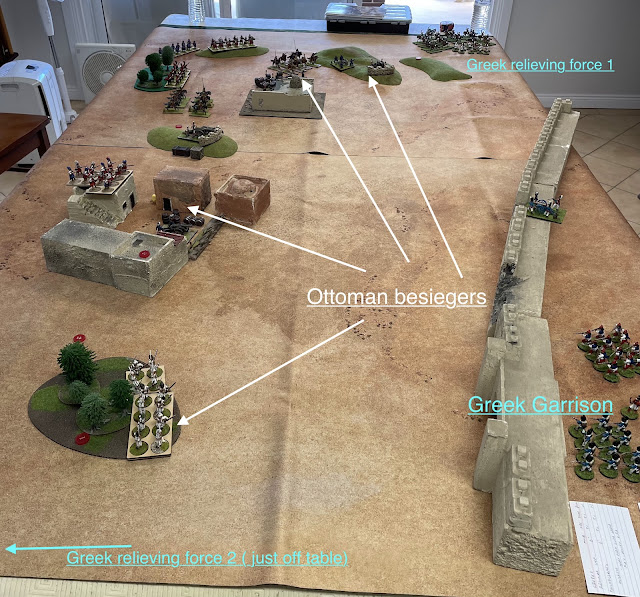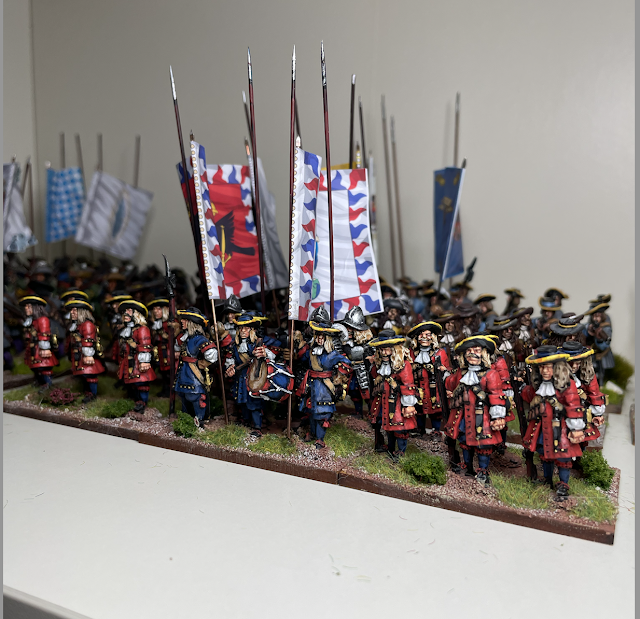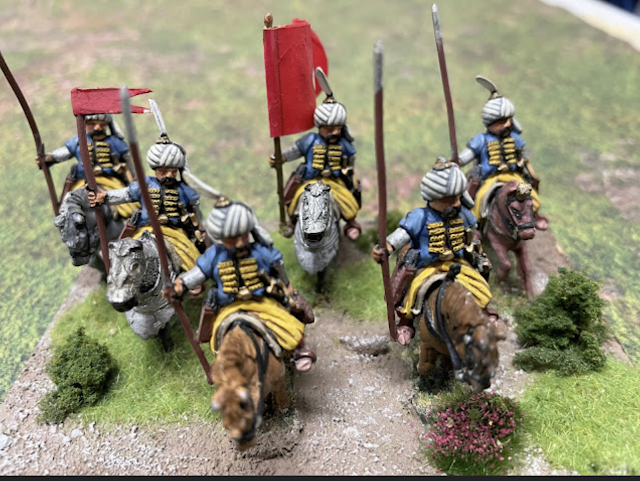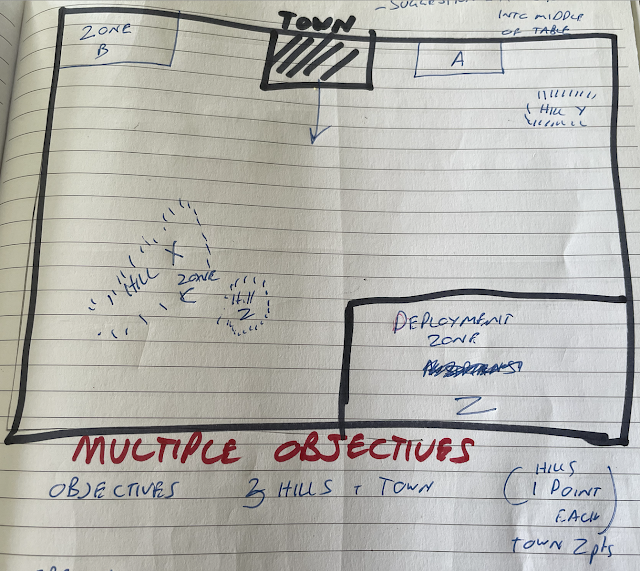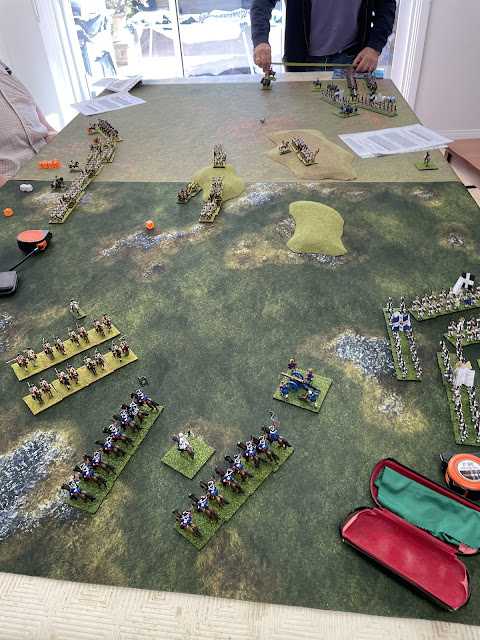With our Seven Years War /War of the Austrian Succession armies nearing completion, it was time to give some of the available troops a run through. Paul had rebased his lovely Minifigs Austrians ( that once belonged to Ross three decades ago) and Ross' French were put through their paces.
We had decided that the usual head-to-head stoush really didn't cut the mustard as it lacked any forethought and didn't give us the ability to use our brilliant tactical minds ( sure..whatever). Scenarios were what was called for and we went for one called 'exposed vanguard'.
Paul and Chris were the Austrians.
Ross and I played Ross' French.
The scenario was only five turns in length and was fairly straight forward. A small vanguard of Austrians (three battalions and 1 battery) were holding a series of low hills on the far side of the table- closer to the French deployment zone the bulk of the Austrians ( 5 battalions of Infantry , 1 gun and 3 Cuirasssier units) had to get there to relieve them before they were swamped by the attacking French ( 6 Battalions of Infantry , 2 guns, 3 Dragoons and 2 Line Cavalry).
Using the Honours of War rules, the Austrians had superior Cuirassiers, superior guns and standard infantry. The French were inferior Dragoons, standard Line Cavalry, infantry and guns but were a bit slower moving under the 'national' characteristics.
What topped it off, was the fact that the French CinC was 'Dithering' as were his senior infantry commander and his dragoon commander.
The Austrians were all Dependable except one who was 'Dashing'.
These classifications make for interesting gaming as players must roll each turn to see how each Brigade will respond.
Now the scenario was based on the French being about one and a half turns from the hills and the Austrian relief forces were 3 infantry turns away- depending on die roll.
And that's where the title of this post came in. The French infantry 'dithered' for two turns in the first three, the French artillery rolled three ones in a row....'sigh'......whereas the Austrians tore across the table, in Turn 2 getting a double move in fact....it was basically obvious that the French weren't doing any real damage to the vanguard and by the end of turn four the French commander was facing a firing squad.









